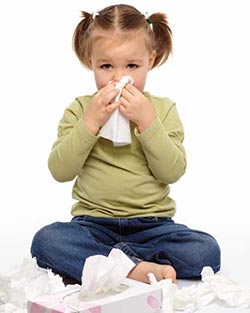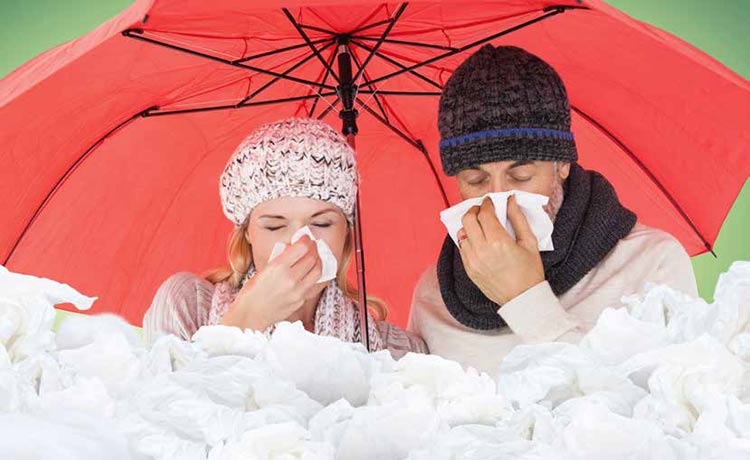It starts on the first beautiful day every spring. Your car is covered with a fine layer of sticky yellow dust. Your eyes begin to water, your throat itches, your head aches and you can’t stop sneezing. It is allergy season. Let the suffering begin. It is the price we pay for the lovely flowers that bloom in the Lowcountry, people say. It’s not just the flowers. Our favorite shade trees are among the biggest culprits.
“Studies have shown that allergy sufferers can experience impairments in sleep, coordination, reaction time, memory, attention, and decrements in work performance up to 40 percent.”

The truth is that the allergens are here almost year-round. There are just more of them in play during spring and fall. In the spring, most of the yellow stuff is caused by a variety of trees as they start their growing season. They include oaks – there are many varieties, and they are copious pollen shedders – and pecan trees, which are ubiquitous here. A collection of weeds, such as ragweed, plus certain grasses, make up the spring mix. That nasty ragweed is also very active in the fall when weeds and grasses re-seed for next year. The mix of pollen producers changes with the seasons.
The allergens settle down somewhat in the summer, only to come back full force during the fall months as grasses and weeds (yes, ragweed again!) flare up. When you inhale those allergens, your immune system mistakes the pollen for an enemy and gears up for battle by creating histamines. Those histamines make you feel miserable, bringing on nasal congestion, sneezing, coughing and fatigue. Your eyes, nose and throat itch. Your sinuses are inflamed so your face literally hurts. Those red watery eyes are not your best look.
For the 50 million seasonal allergy sufferers in the United States, it is practically impossible to avoid the pollen. It is not only on the car, it is in the car. It is tracked into your house by your pets and by you, your friends and your family members.
And, while food allergies are a different classification, you might be surprised to learn to that they can have a cross-reaction with seasonal allergens. For example, ragweed is related to foods such as chamomile, melons, zucchini, bananas and celery, so enjoying these during times of peak pollen counts can make you feel even worse. You may not have a true food allergy, but the combination of airborne pollen and cantaloupe can make it seem so.
“Allergic rhinitis is more than a nuisance for many children and adults,” pointed out Dr. Meredith L. Moore, a physician at Charleston Allergy and Asthma.
“Studies have shown that allergy sufferers can experience impairments in sleep, coordination, reaction time, memory, attention, and decrements in work performance up to 40 percent. An allergist can help identify what allergies you may have and get you on the right track to living at your full potential,” she said.
Simple solutions include showering after you’ve been outside to wash that stuff off your body and out of your hair. Neti pots are used by many people to wash irritants from the nasal passages. Your local drugstores also sell masks to control how much pollen you inhale, but most sufferers muddle through without this pseudo-fashion accessory.
If you need medicine, antihistamines help control the symptoms; over-the-counter brands include Zyrtec, Claritin and Benadryl. Decongestants might ease the congestion, but they can raise your blood pressure, so they must be taken with care. Nasal sprays also are useful but should be used short-term only. Serious sufferers may be forced to seek medical help to reduce the symptoms and avoid further complications such as sinusitis or even asthma.
“When allergies are not easily controlled with OTC (over the counter) medications, we recommend people see a board certified allergist to have allergy testing done,” explained Dr. Jeffrey J. Dietrich, also a physician at Charleston Allergy and Asthma. “An allergist can help with advising on environmental control and avoidance measures to decrease a person’s exposure to their particular allergens.”
Thanks to modern technology, it is possible to track the pollen counts daily. Good information about the amount of pollen day by day in your area can be found at www.charlestonallergy.com/pollen-count/.
“Working with the patient, an allergist can come up with an optimal treatment plan to control the allergies for that patient,” Dr. Dietrich pointed out.
“For those who have incomplete control of their allergies despite medications, or who want to have less need for long term medication use, allergy immunotherapy can be their best option,” he continued.
“Immunotherapy is the only disease modifying treatment for allergies, which can provide the most complete and long lasting effect. With a course of immunotherapy, many allergy sufferers can eliminate their need for daily allergy medications and eventually come off of immunotherapy with lasting benefits afterward.”
“An allergist can come up with an optimal treatment plan to control the allergies for that patient.”
GOT ALLERGIES?
Visit these sites.
charlestonallergy.com/pollen-count
Charleston Allergy & Asthma
Get the most up-to-date and local pollen count.
www.aafa.org
Asthma and Allergy Foundation of America
Basic allergy knowledge, including indoor and outdoor allergies, skin allergies, food allergies and more, plus support groups and other resources.
www.aaaai.org
American Academy of Allergy, Asthma and Immunology
Get the pollen counts for your area on an interactive map, search doctors, look up medications and more. There’s also a kids’ page with games, puzzles and quizzes.







